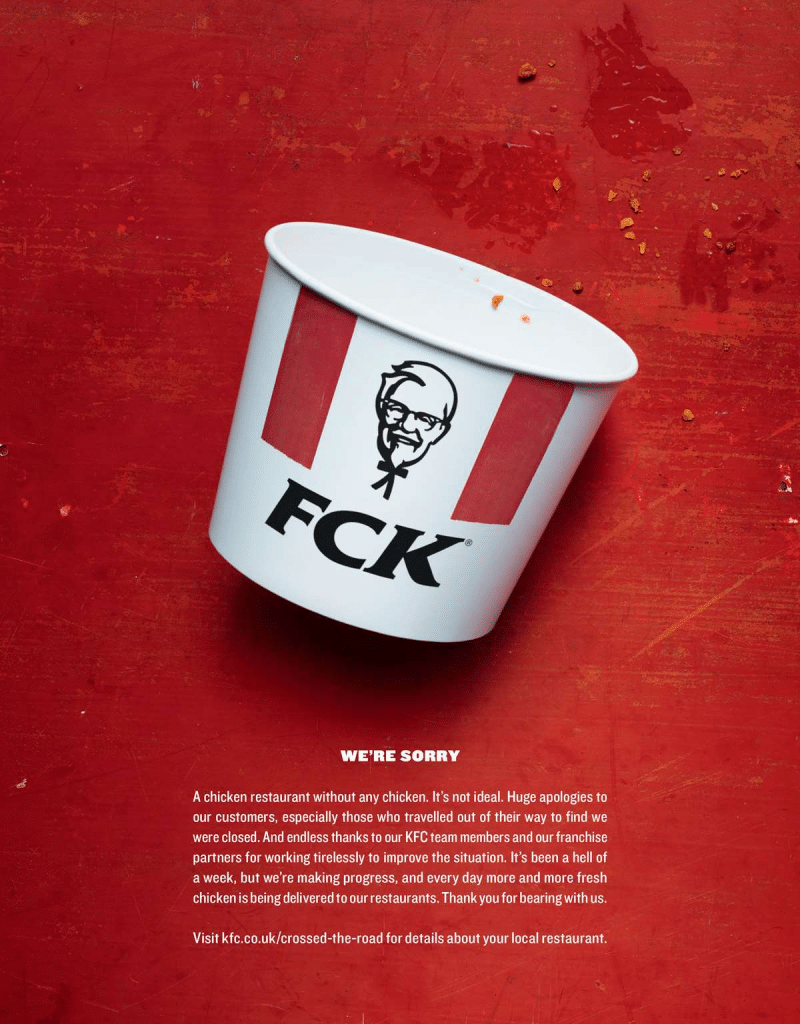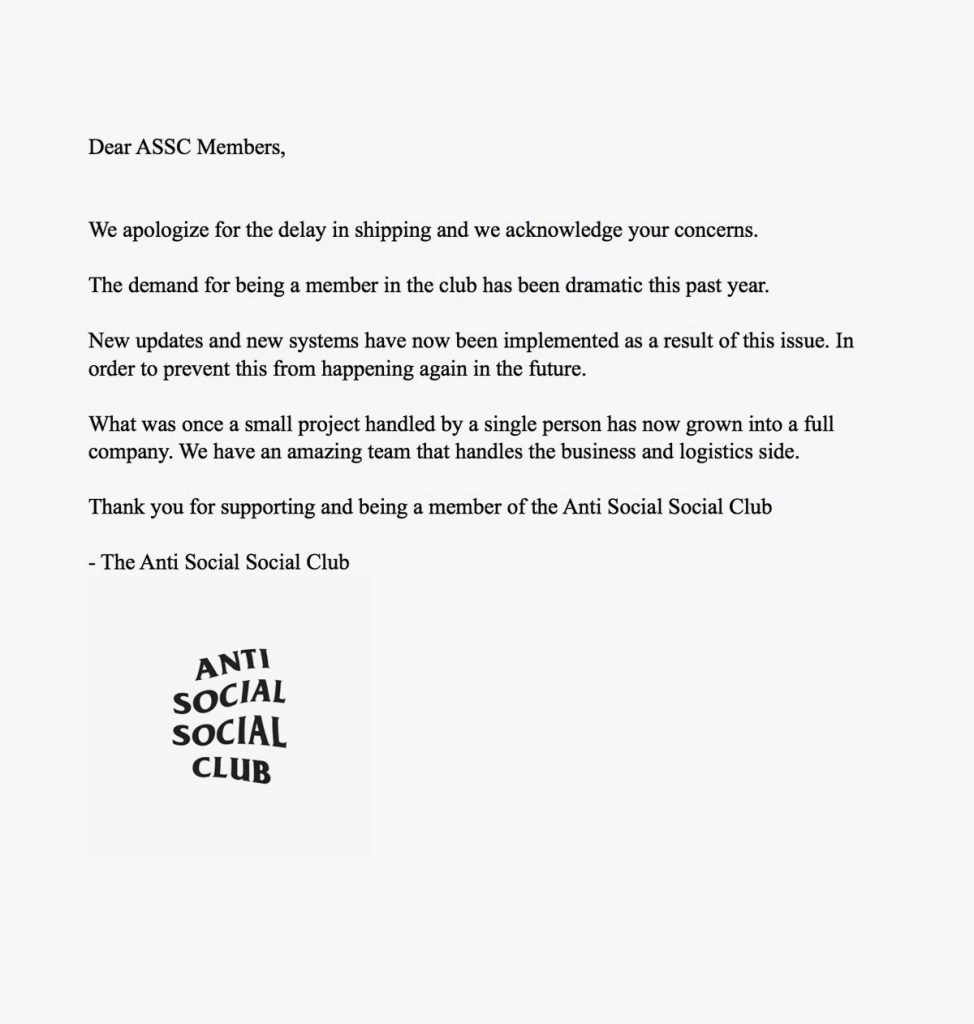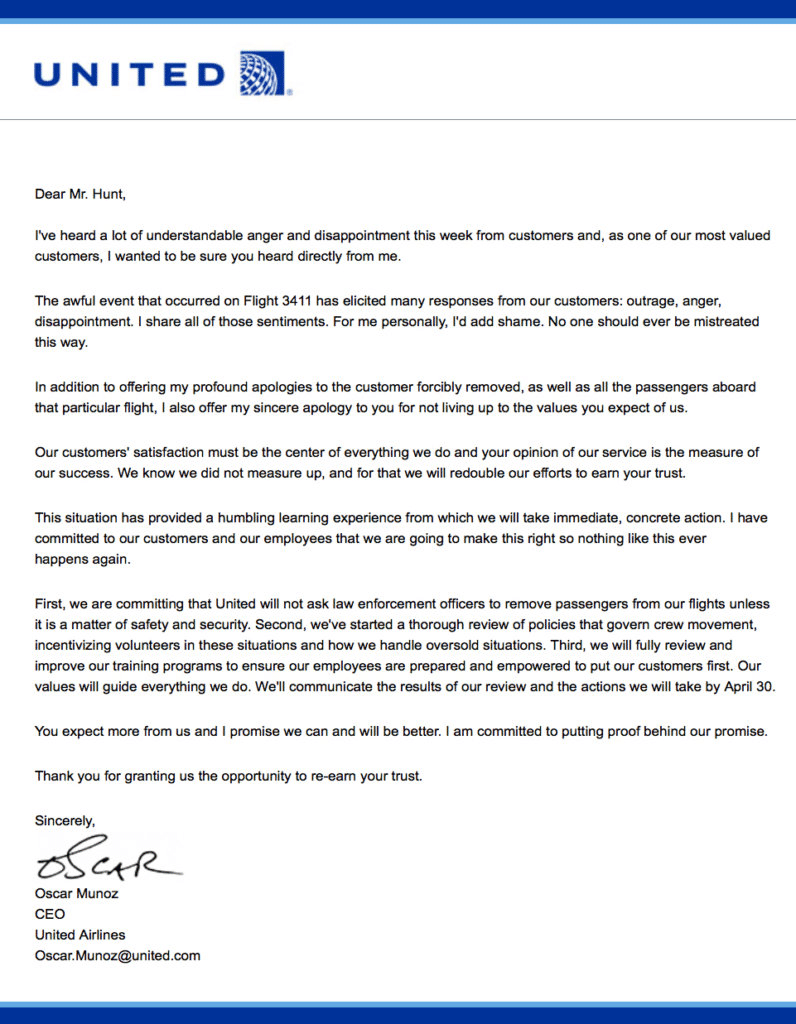We’re all human, and we all make mistakes. Even when we’re at work. There’s no company in the world that gets it right every time, and an apology letter is how to deal with it, when you do miss the mark.
Things go wrong or miscommunication creates a less-than-ideal situation for your employees or your clients.
It’s unavoidable.
But even though your customers know your staff are only human, they still have high expectations of your brand.
Most people are able to forgive. However, when something doesn’t go as planned, they also expect an apology. And they don’t just want to hear a generic “We’re so sorry.” A written apology is what will really mean something.
So, what does a good apology letter look like? Keep reading to learn:
- What exactly is an apology letter?
- The art of an apology
- How to write and share a good apology letter in 5 steps
- 4 types of apology letters (with examples)
- 4 templates to write apology letters to customers
🔍 Does your businesses have a solid customer journey? If so, you’re less likely to need to apologize for any misunderstandings. Get free customer journey map templates👇

What exactly is an apology letter?
An apology letter can seem pretty self explanatory. It’s a letter that offers an apology.
But to your customers, an apology letter represents much more. Issuing one lets them know you care about them, you’re reaching out to them to fix your mistake, and you’re ensuring the mistake doesn’t happen again.
There are many different forms a letter of apology for a customer can take. It might not even be a letter, but instead be an apology email to clients, a message relayed through a virtual call or video call, or a statement posted to a website.
The length of the letter and how it’s distributed usually depends on the severity of the issue—but we’ll get into this a little more later.
The most important thing an apology letter should do is create a connection with your customer. It might be distributed en masse, but when your customer reads it, it should feel personalized—like it was written just for them.
Here’s how you can do that.
The art of the apology
Apologies aren’t always easy. They don’t necessarily come naturally, especially when someone doesn’t admit they’ve done anything wrong.
That’s when we end up getting half-apologies like, “I’m sorry if your feelings were hurt,” or “I’m sorry, but you don’t understand.”
Although these apologies might technically say you’re sorry, they don’t feel genuine. They can actually feel belittling or dismissive—which could push upset customers even further away. If you didn’t get a lot of negative backlash from your first mistake, a careless half-apology can grab even more negative attention.
Think back to the world-famous Peloton ad released during the holiday season where a wife was gifted one of their trendy spin bikes from her husband. The ad was ridiculed for featuring an already fit woman on her journey to fitness.
But the real backlash came from Peloton’s apology. Rather than accepting the issues some audience members took with the commercial, a company spokesperson said they were “disappointed in how some have misinterpreted the commercial.”
Needless to say, people weren’t too happy with that apology. It puts the blame on them for not “getting it” instead of acknowledging where the company might have slipped up, even if the brand itself doesn’t feel like they did anything wrong.
So, what is the right way to apologize? Let’s work through some steps.
How to write and share a good apology letter in 5 steps
It can take some practice to write a good apology letter, but here are five steps to follow to get you started:
1. Give yourself a moment to collect your thoughts
When a mistake happens or a customer expresses their unhappiness, you might feel pressure to react quickly. You want to defend yourself or start apologizing profusely to start setting the record straight.
While you certainly don’t want to wait too long before issuing a response, you also need to find the best route forward. Take the time to gather all the facts, and come up with a solution.
Emotional responses, especially those that are angry, can get attention for all the wrong reasons. If you feel like you’re defensive in your response, you run the risk of sounding like Peloton—like you believe your customer is wrong for being upset.
2. Look at the situation from the customer’s perspective
Remember when you were a kid and you were asked, how would you like it if someone did that to you? Putting yourself in the other person’s shoes is a great exercise in empathy and can help make your apology letter stronger.
If you’re only looking at the situation from your own perspective, it can be difficult to really understand why your customer is upset. And because you’re in a position of power, you probably know more of the behind-the-scenes decisions that led to the mistake, so you might be biased to the criticism.
Think about how you’d feel if a brand you loved acted the way you did. Whether you released a tone-deaf ad or your customer service reps were unwilling to help solve a problem, put yourself in your customers’ shoes for a moment.
If it helps, make a list of all the points you’d want to hear as a customer. You can then use this list when crafting your apology letter to make sure you don’t leave anything out.
3. Share what went wrong—but don’t make excuses
There can be a fine line between explaining what went wrong and making an excuse. While your customers probably want to know the series of events that led to the mistake, they don’t need to hear who is really to blame and why it’s not actually your fault.
You might not like sharing the real explanation of what happened with your customers, but they’ll appreciate it if you do.
Keep your explanation brief and to the point. Don’t share more than you need to, but be sure you’re sharing enough information, so it doesn’t seem like you’re trying to hide something. At this stage, your goal is to rebuild trust with your audience, so try to be as transparent as possible.
4. Offer a solution
Your customers want to know you’ve heard their complaints, you understand where they’re coming from, and you’re working to resolve the issue.
If your mistake costs your customers money or time, offer to repay them or provide a discount for their next purchase. Even if you’re unable to give them their time back, you can give a good-faith effort at compensating them for the time they wasted.
Do your best to make amends. If the mistake happened as a result of a larger issue, let your audience know what you’re doing to fix the problem and ensure it doesn’t happen again.
5. Share your letter with the right person (or people)
Now that you’ve put in the effort to write a strong apology letter, you want to make sure it gets in front of the right audience.
If you’re dealing with small, relatively routine mishaps (such as an overcharge or a delayed shipment), you can disperse these personalized apology letters one-on-one. You might even choose to relay this message when the customer reaches out for support, either over the phone or through chat.
When this happens, it’s important to have the right tools in place to make distributing or sharing an apology letter easy. This means connecting with customers in whatever way works best for them.
For one-on-one correspondence, a comprehensive communication tool like RingCX™ can make sure you’re connecting with upset customers in a way that fits their needs. With the omnichannel contact center solution, if an angry customer is sending complaints by email and also furiously messaging you on X, you can combine these identities to get a full picture of the customer’s grievances.
When you’re ready to respond with your apology letter, you can easily send it using the customer’s preferred communication method—maybe what the customer actually wants is a quick phone call and an email confirmation, so they know a real human acknowledges their problem.
There are some instances where you might need to share your apology letter publicly. After a big mishap—one that goes viral on social media or catches media attention—you’ll likely need to find ways to disperse your message to as many people as possible, as quickly as possible.
For these times, social media, press releases, or statements sent through email can all be a great way to get your apology letter out en masse.
4 Types of apology letters (with examples)
Need some inspiration to get your apology letter started? Here are five different kinds of apology letters and samples of each from other brands.
1. Apology letter to a customer for a mistake
Mistakes encompass a pretty wide range of things, from sending a customer the wrong item to running out of your top-selling item because of a supply-chain error—like what once happened to KFC restaurants in the UK.
After running out of chicken—the staple for the fast-food restaurant—roughly 900 locations were forced to close temporarily. To apologize, the brand issued an apology on digital media channels and in some newspapers and magazines.

KFC owned up to their mistake while still having a bit of fun with it. At the end of the day, their mishap caused some disruption for customers, but the mild annoyance of not getting your favorite fried chicken can be forgiven pretty easily.
What to take away: Don’t be afraid to laugh at yourself. If the mistake is relatively minor and you think your audience isn’t too upset, have fun with your apology—but make sure to read the room. You don’t want to come across as insensitive.
2. How to apologize to a customer for a delay
As consumers, we’ve grown used to getting deliveries and packages just a couple of days after ordering—at worst. When items don’t go out on time, it’s normal to start to wonder where your package is.
Anti Social Social Club, a streetwear clothing label, was experiencing serious delays in items, frustrating customers so much that over 5,000 upset customers signed a petition urging the Federal Trade Commission to take legal action against the brand.
The company issued an apology in response:

Although we don’t recommend waiting for potential federal interference before issuing your apology, ASSC does a good job of explaining their problem, apologizing for the inconvenience and letting customers know they’re aware of the issue. It’s also a good example of how to end an apology letter—by thanking customers for their support.
What to take away: ASSC’s apology letter is short and to the point. It provides some context to the problem without making excuses and lets customers know what they’ve done to solve the problem and prevent the issue from occurring again.
3. Apologizing to a customer for poor service
When it comes to “poor service,” there’s needing to wait another 20 minutes for your takeout order to be ready, and then there’s the world-famous case of the United Airlines traveler being forcibly removed from a flight back in 2017—something that people still remember to this day.
After a video of a man being dragged off a plane went viral on social media and news outlets, travelers who experienced the incident firsthand and those who just watched over the internet were both rightfully outraged. The United CEO sent a formal apology letter in an attempt to make amends:

While an apology is only step one in rebuilding customer trust after a situation like this, the letter establishes expectations for the company going forward. Beyond just saying they’re sorry, they continue to take accountability by promising to hold internal reviews and audits to improve their procedures.
What to take away: While hopefully your poor customer experience isn’t quite as severe as in United’s case, you can still learn a lot from the CEO’s letter. Show empathy and understanding when connecting with your audience, and recognize when things can’t be fixed with just an “I’m sorry.”
4. Writing an apology letter to a customer for an overcharge
We rely on technology a lot for managing purchases and transactions. While it does the trick most of the time, sometimes an error can cause customers to be overcharged for their purchases. Whole Foods experienced a mistake like this in 2015 when prepackaged foods had mislabeled weights, causing customers to pay too much for the items they were buying.
In response, co-CEOs John Mackey and Walter Robb issued an apology video explaining what happened and what steps they were taking to ensure customers are charged properly going forward.
In the video, Robb outright admits that they made mistakes. They don’t try to dance around the subject or pretend that the error wasn’t that big of a deal.
What to take away: Video can be a great way to share your apology, especially if you’re trying to connect with a large number of customers at once. The personal touch that can come in when talking on video, including the ability to share emotion, can help you share emotion and create a stronger connection with your audience.
4 templates to write apology letters to customers
Having a template can help you create business apology letters quickly and easily, ensuring your entire team is using the same messaging when resolving issues with customers.
To help you get started creating an apology letter to a customer that helps rebuild trust and repair customer relations, here are four templates for the kind of apologies mentioned above:
Apology letter template for a general mistake
Just like KFC, if a mistake impacts your customers en masse, you may need to widely share a more general apology letter. Here’s a template to get you started:
Dear [Customer Name/Valued Customers, etc.],
We sincerely apologize for any inconvenience you may have experienced due to [issue]. At [Your Company Name], we prioritize customer satisfaction and anything less than ensuring you are completely happy is not acceptable.
This issue occurred due to [reasoning (miscommunication, faulty technology, etc.)], and to ensure it doesn’t happen again, we are taking the following steps to improve [list of changes being made (training sessions, new systems and processes, etc.)].
We’re also going to provide you with [offer]. We hope this can make up for our oversight.
We value you as a customer and thank you for trusting us with your business. If there is anything we can do to further remedy this situation, please let us know.
Thank you,
[Company Rep’s name]
While this is a great place to start, be sure to make the message your own. Stay true to your voice (like we saw in the example from KFC) and offer resolutions that you believe will fit well with your audience. Knowing what your customer expectations and needs may be after a mistake happens can help you get back on their good side.
Apology letter template in event of delayed deliveries
Sometimes things don’t go to plan and deliveries get delayed. It might not be something you can control—a freak weather event, a supply issue, or even a volcano—but your customers will have the same high expectations of you and will be disappointed.
Here’s a template to help you set things right:
Dear [Customer Name/Valued Customers, etc.],
We sincerely apologize for the recent delays in delivering your order(s). We understand that timely delivery is crucial to your experience with our company, and we deeply regret that we have not met your expectations in this instance.
The delays were caused by [briefly explain the cause (unforeseen supply chain disruptions, unexpected high demand, etc.)], which were beyond our immediate control. However, we take full responsibility for the inconvenience this has caused you and are taking steps to ensure that such delays do not happen in the future.
We would like to offer [a discount on your next purchase/free shipping/a small gift/etc.]. We hope this gesture will make up for the inconvenience and demonstrate our commitment to providing you with the best service possible.
Your satisfaction is our top priority. Please contact us at [customer service contact information] if you have any further questions or concerns.
Thank you,
[Company Rep’s name]
This template is just a starting point—you can make changes and additions to reflect the issue and to match your brand voice.
Apology letter template if you’ve delivered poor customer service
Sometimes a mea culpa is your only option. If you want customers to forgive you when your customer service wasn’t up-to-scratch — maybe a customer has had a poor experience with your contact center for example — try the following template:
Dear [Customer Name/Valued Customers, etc.],
We sincerely apologize for the poor customer service you recently experienced with our company. We’re sorry for any frustration or inconvenience this may have caused.
At [Company Name], we pride ourselves on providing excellent customer service, and it’s clear that we fell short in your case. We’re currently reviewing what went wrong and are implementing measures to ensure it doesn’t happen again.
To make amends, we would like to offer [a discount on your next purchase/a complimentary service/a small gift/etc.] as a token of our appreciation for your patience and understanding.
If there’s anything else we can do to address your concerns or if you would like to discuss this matter further, please contact our customer service team at [customer service contact information].
Thank you for bringing this to our attention and for giving us the opportunity to make things right.
Sincerely,
[Company Rep’s name]
Don’t forget to add the personal touches that give your company its unique voice.
Apology letter template if you’ve overcharged (or otherwise cost customers money)
It’s no small thing if you’ve overcharged customers or otherwise cost them money. Getting their trust back could be tough, but this apology letter template gives you a place to start:
Dear [Customer Name/Valued Customers, etc.],
We sincerely apologize for the error in billing on your recent purchase with [Company Name]. It has come to our attention that you were overcharged, and we deeply regret the inconvenience and frustration this may have caused.
Upon reviewing your account, we identified that the overcharge was due to [briefly explain the cause (a system error, a manual entry mistake, etc.)]. We have taken immediate steps to correct this error and prevent it from happening again in the future.
We have already processed a refund of the overcharged amount to your original payment method. You should see this reflected in your account within [number] days. Additionally, as a gesture of goodwill and to show our appreciation for your understanding, we would like to offer you [a discount on your next purchase/a complimentary service/a small gift/etc.].
Your satisfaction is our priority, and we are committed to ensuring that your experience with [Company Name] is nothing short of excellent. If you have any further questions or concerns, please contact our customer service team at [customer service contact information].
Thank you for your patience and understanding, and we apologize again for any inconvenience this may have caused.
[Company Rep’s name]
You can amend this template to use for other occasions when a customer has paid too much—just make changes where you need to.
Writing professional apology letters to customers doesn’t need to be hard
Apologizing is a skill that takes a lot of practice, but luckily, the more you do it, the more natural it becomes.
While we always want to ensure we’re preventing making mistakes as much as possible, knowing what to do or say when something inevitably goes wrong can make the situation seem a lot less overwhelming.
Hopefully, with the help of our apology letter examples and templates you’ll be able to mitigate any mistakes you make.
Frequently asked questions
What is the best way to start a letter to a customer apologizing for a mistake?
Begin an apology letter to a customer with a sincere and direct acknowledgment of the issue. For example, “Dear [Customer’s Name], I sincerely apologize for the inconvenience caused by [specific issue].” This shows empathy and takes responsibility right from the start.
Is it acceptable to use email to apologize to a customer?
Yes, it’s acceptable to apologize by email rather than a letter. Email allows for quicker communication, ensures timely resolution, and provides a written record. It’s efficient, especially for addressing issues promptly, demonstrating responsiveness and commitment to customer satisfaction.
Originally published Jun 26, 2024, updated Sep 26, 2024






